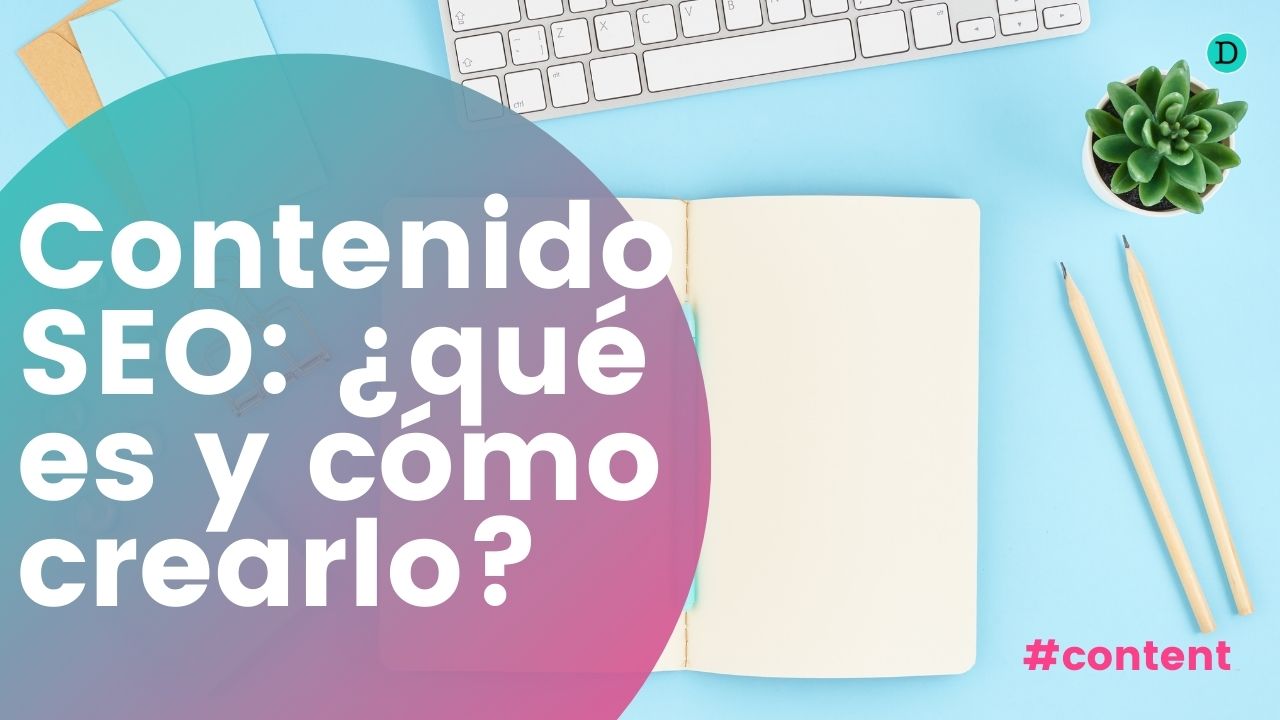
Pablo Herrera
Head of SEO & Content
Dwell time is one of the most interesting metrics for SEO. It is a concept that arises in the offline world and is transferred to ecommerce before reaching organic positioning.
Traditionally, dwell time was the time a person spent looking at a shop window or inside a store. It was understood that the more time spent the better, as it indicated that they were finding it interesting.
The dwell time can also be used to our advantage, forcing the user to spend more time and multiplying conversion opportunities. A clear example is IKEA. By forcing you to go through the entire exhibition before reaching the store, it doesn’t matter if you only wanted to buy a glass and two plates or a pillow, you end up seeing everything and, in many cases, buying more things.
Of course, this can also lead to rejection. Personally, for example, I find going to IKEA a nightmare and prefer to avoid it. In fact, I don’t mind spending more if I know I’ll waste less time, finding what I need in a moment.
That’s why there are other stores that opt for the opposite, making the shopping experience as easy as possible.
Both strategies are valid. When you have a business of this type, as in digital, the key is to test, measure and stick with what gives you the best results.
As always in marketing, you have to start from the data. And that means measuring.
What is Dwell Time in SEO?
índice

Fortunately, in SEO and digital, measurements are easier to make than in a large store. If the dwell time traditionally indicated the time a person spent inside a store (or in front of its shop window), if we transfer it to digital, we can measure the time spent in the store:
The dwell time is the time a user spends on a website or ecommerce. This time includes their entire experience on the site, from the moment they access it until they finally close the browser tab or click to go back to the previous page.
In summary, the dwell time is the time spent on the page.
If we go from here to SEO:
The dwell time in SEO is the time a user spends on a web page from the time he clicks on a search result until he leaves the result. If he/she performs actions or hits within the same page, we are still talking about dwell time.
The dwell time is a very important SEO metric for Google, although it has never been confirmed by the search engine experts. It is understood because it implies the user’s satisfaction with what he/she has searched for.
If you search for certain information and spend time reading it, it is logical to think that you have found something that interests you. In case the result does not seem interesting to you, the usual behavior would be to go back to the SERPs and click on a different result.
Dwell Time and Bound Rate

It is common for these two metrics to be confused. However, dwell time is a different metric than the bounce rate.
The bounce rate indicates the percentage of users who enter a web page and leave without any interaction. By interaction we mean clicking or going to another page within the same page.
Within the dwell time, however, will be the time of both users who do not interact and those who do.
The good thing about the dwell time is that it allows to separate between the bounces reflected in the metric and those that are real. Let me explain.
A user may be looking for information on what dwell time is. He gets to this article, reads it and leaves the page. According to our Analytics this would raise our bounce rate.
However, the user may have had a good user experience. He found what he was looking for, read it and left. A success.
By means of the dwell time we can check the time spent on the page. If it has been a certain time (depending on the type of content) we can conclude that if he has paid attention or has been interested in what was there, while if he has left after 10, 15 or 20 seconds, probably we have not achieved our goal.
In many pages, interaction is not essential to achieve the objective of the pages.
Differences with Pogo Sticking

Another key metric to consider if the objective is being met is the Pogo Sticking.
In this case, it is the indicator of how many times a person who comes to your website through SEO, returns to the search results page (SERPs) and clicks on a different result.
This is a clear indicator that the user has not been satisfied with our content and has looked for another option for information. They may have liked it, if they have had a high dwell time, but still want to learn more.
However, if there is pogo sticking and a poor dwell time, it is clear that we are not achieving our objective.
A poor dwell time but no pogo sticking, on the other hand, can be a good sign.
Let me give you an example. Imagine that you want to know the name of San Fernando (Cádiz). You look up the city, go to the Wikipedia page and look in the column on the right. Isleño or cañaílla, very good. That’s it, you’ve taken ten seconds and you’ve achieved your goal.
However, if you leave and enter two or three more results, Google will understand that you haven’t done it. Or so we think because there is no official confirmation that this meter is used either.
Personally, Pogo Sticking is an indicator that I love because it is where SEO is democratised. It doesn’t matter how much money you have spent on your linkbuilding strategy, etc… what matters here is to be useful to the user.
And, for me, that’s the most important part of a good SEO job. If you are not useful to the user, don’t do an organic positioning strategy. It won’t work.
How to improve Dwell Time?

Now that we have seen what dwell time is and how it differs from pogo sticking and bounce rate, let’s move on to the next point. How do we improve dwell time? This is influenced by both technical and design elements and, of course, by the content, so let’s look at them one by one.
Loading speed
Loading speed is a very important SEO positioning factor. But, beyond what the algorithm thinks, it also influences the user’s response.
How many times have you tried to search for something and ended up going back because the page took too long to load? I, being impatient by nature, countless times. I don’t just want to be told what I want to know, I want to be told now.
My time is my most valuable resource and if you don’t value it enough, I prefer to consult an alternative.
Poor loading speed can destroy the best SEO content. It may seem that if it takes longer to load it will lengthen the dwell time but in practice what happens is that people get desperate and leave.
Therefore, it is important to have a good server, with elements and photographs of the right size and that the load is fast enough both in desktop and mobile version.
Web Usability (UX)
On the other hand, we must also talk about web design and usability web. Web usability is essential to offer a good user experience.
If the information is not accessible, if the typography is difficult to read and, in short, if we do not make it easy for the reader, they will end up leaving.
Again, I have to repeat that we are becoming more and more impatient. We are not like in the early days of the Internet when any page would do. Nowadays we are demanding and we demand more convenience. If we don’t find it comfortable, we will leave the site and go to another one where we are treated as we think we deserve to be treated.
We must also bear in mind that nowadays mobile searches have multiplied. So our page should have an AMP version and, preferably, focus on it.
In other words, our most perfect design should be mobile and not desktop, at least if the analytics confirm that this is where most of them are concentrated.
The text
On the other hand, we also need to talk about the text itself. We need to respond to a search intention. Therefore, having correctly chosen the keyword in the keyword research is going to be fundamental.
It is also important to create SEO content taking into account all its characteristics. Do not hide the answer to the question. Don’t think that by answering in the last paragraph the user is going to stay to the end.
It’s more about expanding the information. But not with just anything, but with information that is useful to the user. Give the answer first and then add further content.
In that sense, we can follow the pyramid structure of news in journalism. Maybe you don’t need to answer everything in the first sentence, but don’t leave it to the end. Start answering the questions posed by your main keywords from the beginning.
The videos
Another way that often works to improve dwell time is to introduce videos. Of course, as with written content, it must be videos directly related to the search intent.
We are consuming more and more audiovisual content in our searches and less text, so if we see a video on the page it is very likely that we will click on it and stay for part of the time it lasts.
Similarly, if we make a podcast we can also post it on the page.
More information: How to make a podcast to promote your business?
Anything that offers additional information in other formats will be interesting. Adding value to the user and giving them another reason to spend more time with us.
Infographics
In this aspect, infographics also tend to work very well. In this case, they not only help us in terms of SEO and dwell time, but also allow us to improve the branding of our company.
To do this, you have to make quality infographics that are going to be useful and can be shared later. This type of content also tends to work very well on social networks, so we can kill two birds with one stone.
Of course, you will need a design person to do a good job. If the infographic is not good enough, it will simply be hours of work wasted.
Links and related content
Finally, internal links and related content should also be mentioned. Again, the key is to provide value to the user.
It is great to link to other articles or information on the page that may be of interest to the person who comes to our website, as long as it may be of real interest to them.
In that case, it is possible that they will click on the new content and stay even longer with us, which is the goal we are looking for.
In the end, improving dwell time has a lot to do with making good SEO content. Think about the user and give them something worthwhile, only then will they decide to stay with us.


